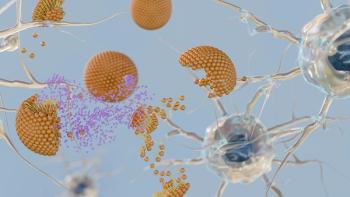
- BioPharm International, August 2023
- Volume 36
- Issue 8
- Pages: 6
New Magic from mRNA
mRNA may be a modality whose chief advances are yet to come.
The term microbiome may have first been used in an agriculture paper (1), but widespread traction was sparse until Francis Collins (then head of the National Human Genome Research Institute) talking through upcoming funding limits for simply sequencing yet another organism, with Broad Institute head, Eric Lander, had a true eureka moment, to seize upon sequencing the human microbiome—skin, gut, hair, and so forth, for multiple funding projects going forward. Suddenly all things microbiome became in vogue. However, as recently as February 2020, scientific papers were still proposing vague notions that, “The mechanisms by which microbiomes impact on cancers can yield new diagnostics and treatments, but much remains unknown” (2). What had seemed administrative legerdemain at that time of Collins eureka moment is, in 2023, absolutely a therapeutic window to drill down on. The tumor microenvironment as therapeutic approach has come of age, and the tool of the hour is messenger RNA (mRNA).
Acknowledging that bacteria and fungi form complex colonies with solid tumors, an approach to unravel this microbiome community was developed with mRNA molecules encoded to produce a toxin lethal to cohabitating bacteria. In this experiment, pseudomonas exotoxin A domain III was packaged into lipid nanoparticles and injected into the tumor bed. “We hypothesized that encoding the active domain only, without the binding and translocation domains of the original toxin, will allow potent intracellular effect upon mRNA translation, while reducing the risk of side-off effects in case of toxin release from target cells,” related professor Dan Peer, co-lead author of the study (3). Unlike chemotherapy where resistance gathers pace during extended exposure, this approach is easily amenable to simply switching to a different natural toxin. The study goes on to describe that most of the lipid nanoparticles reached cancer cells, destroying 44–60% of them.
While the history of drug discovery science is replete with false dawns, it is encouraging to see mRNA make an alliance with deeper understanding of the mechanics of the tumor microbiome. mRNA may be a modality whose chief advances are yet to come.
References
1. Whipp, et al., Fungi in Biological Control Systems. Manchester University Press. 1988.
2. Xavier, J.; Young, V.; Skufca, J., et al. The Cancer Microbiome: Distinguishing Direct and Indirect Effects Requires a Systemic View. Trends in Cancer. 2020 March 6(3), doi: 10.1016/j.trecan.2020.01.004.
3. Granot-Matok, Y.; Ezra, A.; Peer, D.; et al. Lipid Nanoparticles-loaded with Toxin mRNA Represents a New Strategy for the Treatment of Solid Tumors. Thernostics. 2023 July.
About the author
Chris Spivey is editorial director for BioPharm International.
Article details
BioPharm International
Vol. 36, No. 8
August 2023
Page: 6
Citation
When referring to this article, please cite it as Spivey, C. New Magic from mRNA. BioPharm International. 2023 36 (8) 6.
Articles in this issue
over 2 years ago
Investigating Outsourcingover 2 years ago
Balancing AAVs Versus LLVsover 2 years ago
A Look into Biologic Scale-Up Strategiesover 2 years ago
Streamlining Downstream Processesover 2 years ago
Challenges to Cell Expansion for Allogenic Cell Therapiesover 2 years ago
Dealing with Data: How to Keep It Manageableover 2 years ago
The United States and the Global BioPharma Marketover 2 years ago
Industry Challenges Medicare Price Negotiation Schemeover 2 years ago
Supply Chain SecuritiesNewsletter
Stay at the forefront of biopharmaceutical innovation—subscribe to BioPharm International for expert insights on drug development, manufacturing, compliance, and more.





